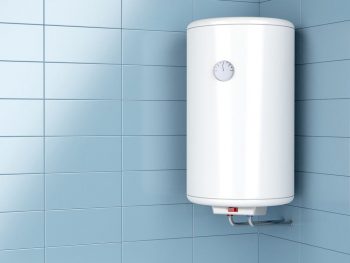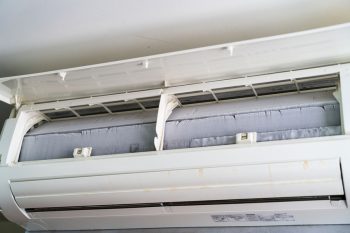
The air conditioning system is an integral part of modern homes and vehicles, providing comfort during hot weather. The heart of this system is the AC compressor, a device that pressurizes the refrigerant and circulates it through the system. However, like any other mechanical device, it can sometimes face issues. One of these is power-related problems. In this comprehensive guide, we will show you how to check the power to an AC compressor.
To check the power to an AC compressor, first locate the compressor in the engine compartment. Then, using a digital multimeter set to voltage DC mode, check for a live power source in the circuit. Disconnect the power connector from the AC compressor clutch and test for voltage. Finally, check for grounding and resistance between the tube and each of the terminals. If there’s no voltage or the measurement is OL (overload), the compressor might be having power issues.
Identifying the Problem
Before delving into the process of checking the power to an AC compressor, it’s crucial to identify the signs indicating a potential problem. Here are some initial signs:
- Weird noises: If you hear odd, clunky noises coming from the AC unit, it could be a sign that the compressor is about to fail.
- Hotter air: The air coming out of the vents starts to get progressively hotter, indicating the compressor is becoming weaker.
- Stuck clutch: A stuck clutch will prevent the compressor from starting up when it’s supposed to, and it might stay on even after the car has been turned off.
- Less powerful airflow: A marginally decreased airflow can be an early sign of a failing compressor.
- Higher than normal electric bill: An unusually high electric bill can be an indication of an air conditioner compressor malfunction.
- Lack of hot air being released outside: If the air near the fan on the air conditioning unit is not hot but is instead lukewarm or cool, it’s a sign that your compressor could be having problems.
Tools Required
To check the power to an AC compressor, you will need:
- Safety goggles and gloves
- A digital multimeter
- A test light or circuit probe tester
- A socket and ratchet set, wrench set, and screwdrivers
- A workshop manual or repair guide for your specific car model
Safety Precautions
Before starting the process, it’s essential to take some safety precautions:
- Wear protective gear, including safety goggles and gloves.
- Ensure the power to the unit is turned off.
- Test for voltage with a multimeter.
- Lockout and tag out if the electrical disconnect is a distance away from the outdoor unit.
- Inspect the compressor for physical damage.
- Ventilate the work area if accidental refrigerant discharge occurs.
- Avoid open flames and high-temperature surfaces.
Checking the Power
Here are the steps to check the power to an AC compressor:
- Locate the AC compressor: This is typically found at the front of the engine compartment, driven by the drive belt.
- Check the power source: Use a multimeter set to voltage DC mode to check for a live power source in the circuit.
- Test the compressor clutch: Disconnect the power connector from the AC compressor clutch. Place the positive multimeter probe on one of the connector terminals and the negative probe on the negative battery post. If you don’t get any voltage, the power supply to the compressor clutch is bad.
- Check for grounding and resistance: Clean a piece of tubing connected to the compressor to use as a ground. Test for resistance between the tube and each of the terminals. If the measurement is OL (overload), then the compressor is not shorted to ground.
Troubleshooting and Professional Help
If the AC compressor is not receiving power, you may need to troubleshoot or seek professional help. Common causes of a faulty AC compressor include overheating, electrical failure, low refrigerant levels, wiring issues, contaminants in the system, and insufficient oil lubricant.
When dealing with power issues in an AC compressor, it’s best to seek professional help when the AC compressor is not turning on or has stopped working altogether, or if you suspect wiring issues or electrical problems.
In conclusion, checking the power to an AC compressor involves several steps from identifying the problem, gathering the necessary tools, taking safety precautions, and conducting the power check. While some homeowners or DIY enthusiasts may feel comfortable performing these steps, others may prefer to hire a professional. Regular maintenance and inspections by a certified HVAC technician can help prevent most AC compressor problems and extend the life of your unit.
Frequently Asked Questions
What is the function of the AC compressor clutch?
The AC compressor clutch is a component that controls the engagement and disengagement of the AC compressor pulley. It allows the compressor to turn on/off depending on the AC system’s needs.
What does it mean if my multimeter reads “OL” (overload)?
An “OL” reading on a multimeter indicates that the resistance being measured is beyond the capacity of the multimeter, essentially an open circuit. In this context, it means the AC compressor is not shorted to ground.
What are the dangers of a faulty AC compressor?
A faulty AC compressor can lead to a lack of cooling in your car or home, higher energy consumption, and potential damage to other components of the AC system. It can also cause refrigerant leaks, which can be harmful to the environment.
How often should I have my AC compressor inspected?
It’s recommended to have your AC compressor inspected at least once a year, generally in the spring before the hotter months when you’ll be using your AC system more frequently.
What is the role of refrigerant in an AC system?
The refrigerant is a fluid that absorbs heat from the environment and cools the air in your AC system. It is circulated by the AC compressor through the system, changing from a low-pressure gas to a high-pressure liquid as it absorbs and releases heat.











